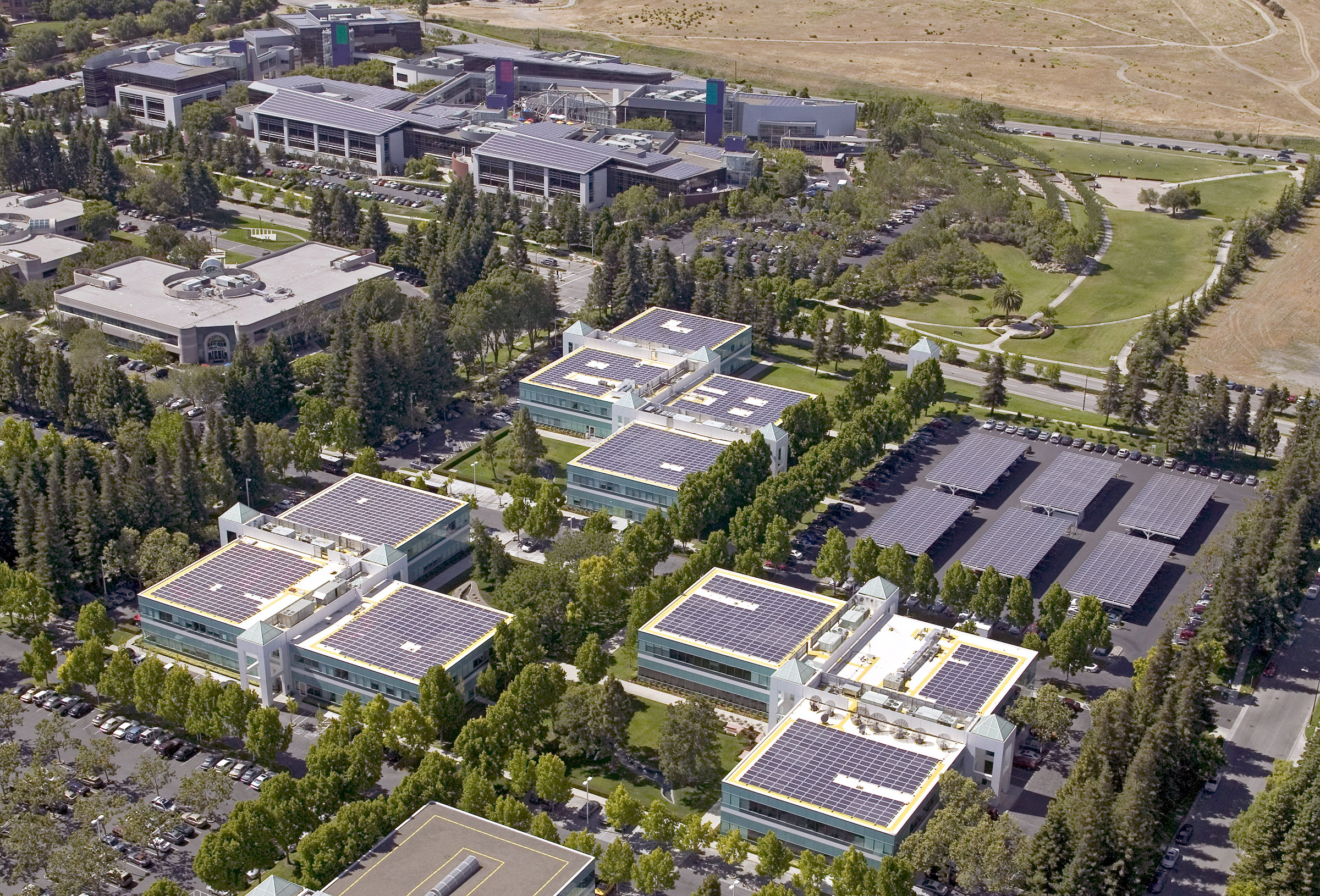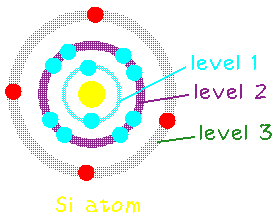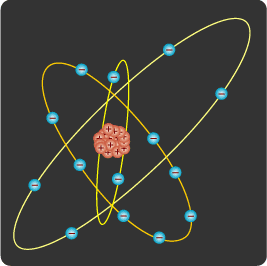Photovoltaic Cells
Direct conversion into electricity  Photovoltaics; conversion of solar photons into electrons that
flow down a semi-conductor.
Main problem is low efficiency (about 10%).
Photovoltaics; conversion of solar photons into electrons that
flow down a semi-conductor.
Main problem is low efficiency (about 10%).
Photons into Electrons: PhotoVoltaic Devices
Charge Generation 
  Photoelectric Effect Photoelectric Effect

Putting this into application on a large scale (The Google Campus) then looks like this

Main qualitative points:
- When photons strike a metal, their energy is used to liberate loosely
bound electrons and therefore induce a current.
- Efficiency of this process depends upon the material
- This is the principle behind Digital Cameras (all college graduates should know how
a digital camera works -- its a literacy test).
To make use of the photoelectric effect, we need material that is a
good conductor of electricity and which can be manufactured in bulk
at reasonable cost. This conditions strongly constrain the available
choices. For most practical aspects, Silicon is the material of choice.
Silicon:
To begin with, we will consider a solid (like a semi-conductor) as
any material in which the atoms are arranged in an ordered fashion.
Such ordered is usually referred to as a crystal or a lattice.
Let's consider the case of silicon.
Silicon has 14 electrons, but only the outer most 4 are available as
"valence" electrons to help bond with other atoms.


In its solid form, each silicon atom normally shares one of its four valence electrons in a covalent bond with each of four neighboring silicon atoms. The solid thus consists of basic units of five silicon atoms: the original atom plus the four other atoms with which it shares valence electrons.
In two dimensions we can represent silicon as below

Each silicon atom shares its four valence electrons with valence electrons from four nearest neighbors, filling the shell to 8 electrons, and forming a stable, periodic structure.
Once the atoms have been arranged like this, the outer valence electrons are no longer strongly bound to the host atom. Therefore, in principle, thse
outer electrons can easily be "freed" from the lattice and move through
the material. The movement of electrons through material is a current.
The outer shells of all of the atoms blend together and form what is called a band. This band is called the conduction band .
Electrons that are still bound in atoms are said to be in the valence band .
The difference in energy between these two bands is called
the bandgap energy
For a solar energy application, we must find a material in which there is a good match
between the band gap and the incoming energy spectrum of solar radiation.
Fortunately, silicon suffices and its very abundant and easily mined from the earth's
crust.
Note: more exotic materials can be used to make a solar cell and make a more efficient one
but none of those materials has any cost-effective mass production ability.
Schematic structure of energy bands in Silicon:

Hence, if a silicon atom receives at least 1.11 Electron
Volts from some source, a valence electron will move
to the conduction band. Once an electron is in the conduction
band, the material can carry a current and the material is
now a conductor.
So much energy is 1.11 Electron Volts?

- 1.11 eV corresponds to the energy that a photon of
wavelength 1.12 microns has.
- 77% of the energy from the sun is carried in photons
with wavelength less than this and therefore can move
a valence electron in silicon into the conducting band.
- However, as silicon heats up, more frequent collisions
of atoms and carriers occur in the material. This causes the
internal resistance to increase and the overall ability to
carry a current decreases. Thus, as the temperature rises,
the efficiency of a silicon PV cell decreases .
 You can not defeat this fundamental piece
of physics without paying an even larger energy cost in cooling.
(Note that all measures of PV efficiency are made a 0 degrees C
when done in a lab. "Rated" efficiencies are usually done at a
standard temperature of 25 C.) You can not defeat this fundamental piece
of physics without paying an even larger energy cost in cooling.
(Note that all measures of PV efficiency are made a 0 degrees C
when done in a lab. "Rated" efficiencies are usually done at a
standard temperature of 25 C.)
In general:
- efficiency is decreased by 0.5% for every 1 degree C incresae in Temperature
- operating temperature of roof top PV array is usually 20-40 degrees C higher
than the air temperature.
- ON a 100 degree F day, a PV will have an efficiency of only 2-3% (but this is compensated
for by abundant sunshine).
- Real world performance of most systems, averaged anually, is 5-10%
| 





 Photovoltaics; conversion of solar photons into electrons that
flow down a semi-conductor.
Main problem is low efficiency (about 10%).
Photovoltaics; conversion of solar photons into electrons that
flow down a semi-conductor.
Main problem is low efficiency (about 10%).

